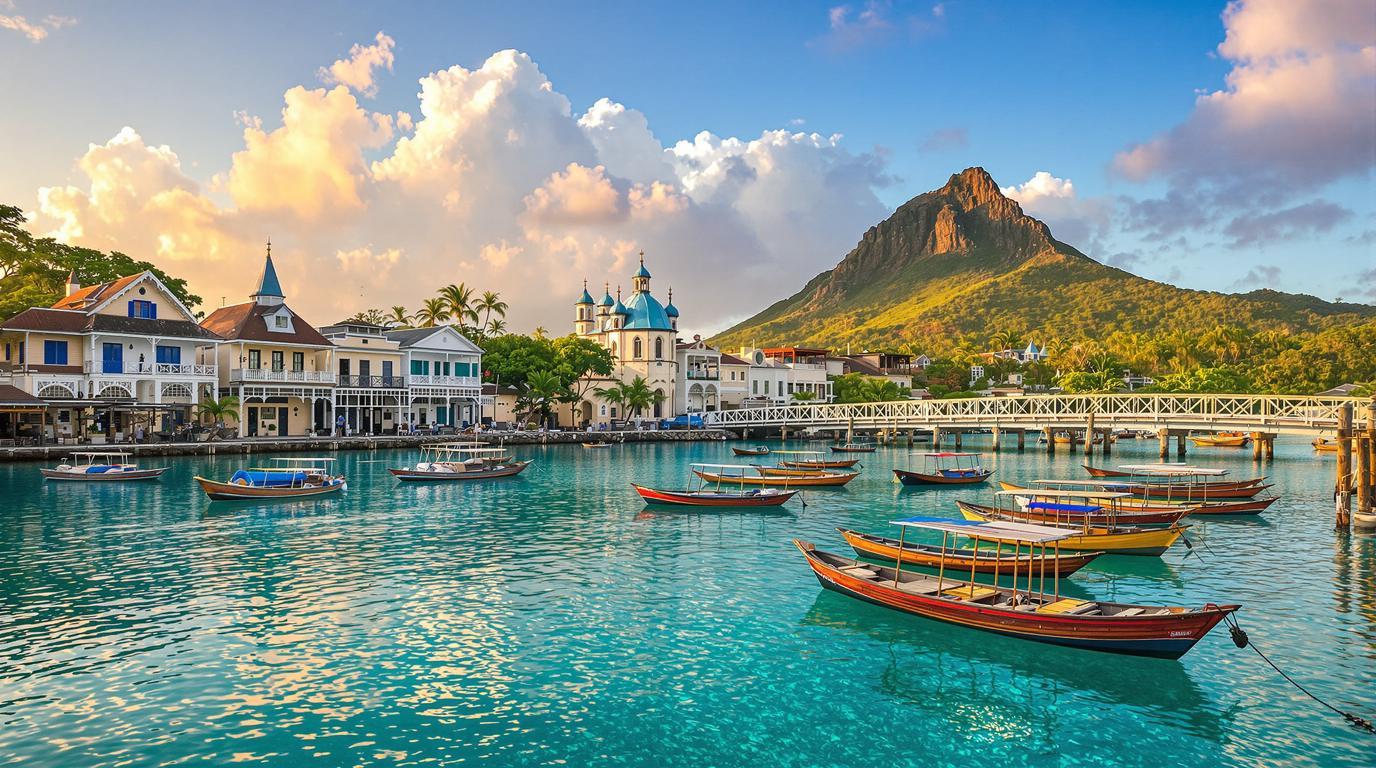Mahebourg: The Forgotten Gem of Mauritius Where History Meets Turquoise Waters
A colonial outpost frozen in time
Standing on the historic waterfront of Mahebourg, I watch fishermen launch their wooden pirogues into the shimmering lagoon just as their ancestors have done for centuries. This historic coastal town in Grand Port, Mauritius, remains remarkably unchanged despite the island’s tourism boom. Founded in 1805 and named after French governor Mahé de Labourdonnais, Mahebourg offers a rare glimpse into Mauritius before luxury resorts redefined its shores.
“Our town witnessed the only naval victory Napoleon ever achieved against the British,” explains local historian Raj Appadu, pointing toward the turquoise waters. “The Battle of Grand Port in 1810 is why our museum houses cannonballs and ship fragments that tourists walk right past on their way to the beaches.”
Where azure waters hide pirate legends
The protected lagoon stretching before Mahebourg offers more than postcard beauty. Its crystal waters, part of Blue Bay Marine Park, shelter over 72 coral species and countless fish, making it a snorkeler’s paradise. These same waters once concealed pirate ships seeking refuge from colonial naval forces.
Local guide Marie Lafleur tells me, “My grandmother swore that pirate treasure remains buried on Île aux Aigrettes just offshore. Whether true or not, the island today guards a different treasure – some of our last endemic species that exist nowhere else on Earth.”
A market where time stands still
Monday mornings transform Mahebourg as its central market bursts with color and energy. Unlike the sanitized shopping experiences found in America’s most famous attractions, this authentic market remains blissfully unchanged. Pyramids of exotic fruits, fragrant spices, and handwoven baskets crowd narrow aisles while locals haggle with the same passionate intensity they’ve shown for generations.
The waterfront that witnessed history
Mahebourg’s seaside promenade offers views that rival Europe’s most spectacular landscapes. Here, the imposing silhouette of Lion Mountain creates a dramatic backdrop as the 200-year-old Cavendish Bridge spans mangrove-lined waters. Dawn transforms this scene into a photographer’s dream as golden light bathes wooden Creole houses whose ornate balconies tell stories of colonial wealth.
A culinary crossroads of cultures
Mahebourg’s food scene reflects its position at the crossroads of African, Indian, Chinese, and European influences. Street vendors sell dholl puri (split pea flatbreads) and gato pima (chili cakes) for pennies, while waterfront restaurants serve fresh-caught fish in creative preparations.
“We don’t cook Mauritian food, we cook Mahebourg food,” insists chef Danielle Pierre at her waterfront restaurant. “Our dishes reflect our specific history – the spices that once made this port famous.”
Beyond the tourist trail
While visitors flock to experience underwater light phenomena in more famous destinations, Mahebourg offers its own natural spectacle. At Blue Bay Marine Park, glass-bottom boats reveal coral gardens with visibility rivaling any natural light show.
For history buffs, the National History Museum houses artifacts from colonial ships and the island’s Dutch, French, and British periods. Unlike Europe’s preserved medieval structures, these colonial buildings tell stories of conquest, slavery, and the birth of a multicultural nation.
When to experience Mahebourg’s magic
Visit during April to June for calm seas and pleasant temperatures. Avoid the cyclone season (December-March) when heavy rains can interrupt outdoor activities. The Monday market provides the week’s most authentic cultural immersion, while early mornings offer the most magical light for photographers seeking to capture Lion Mountain reflected in the lagoon.
As I watch the sun set over Grand Port Bay, painting fishing boats in silhouette against fiery skies, I realize Mahebourg offers something increasingly rare – a chance to experience the authentic Mauritius before tourism transforms it forever.
